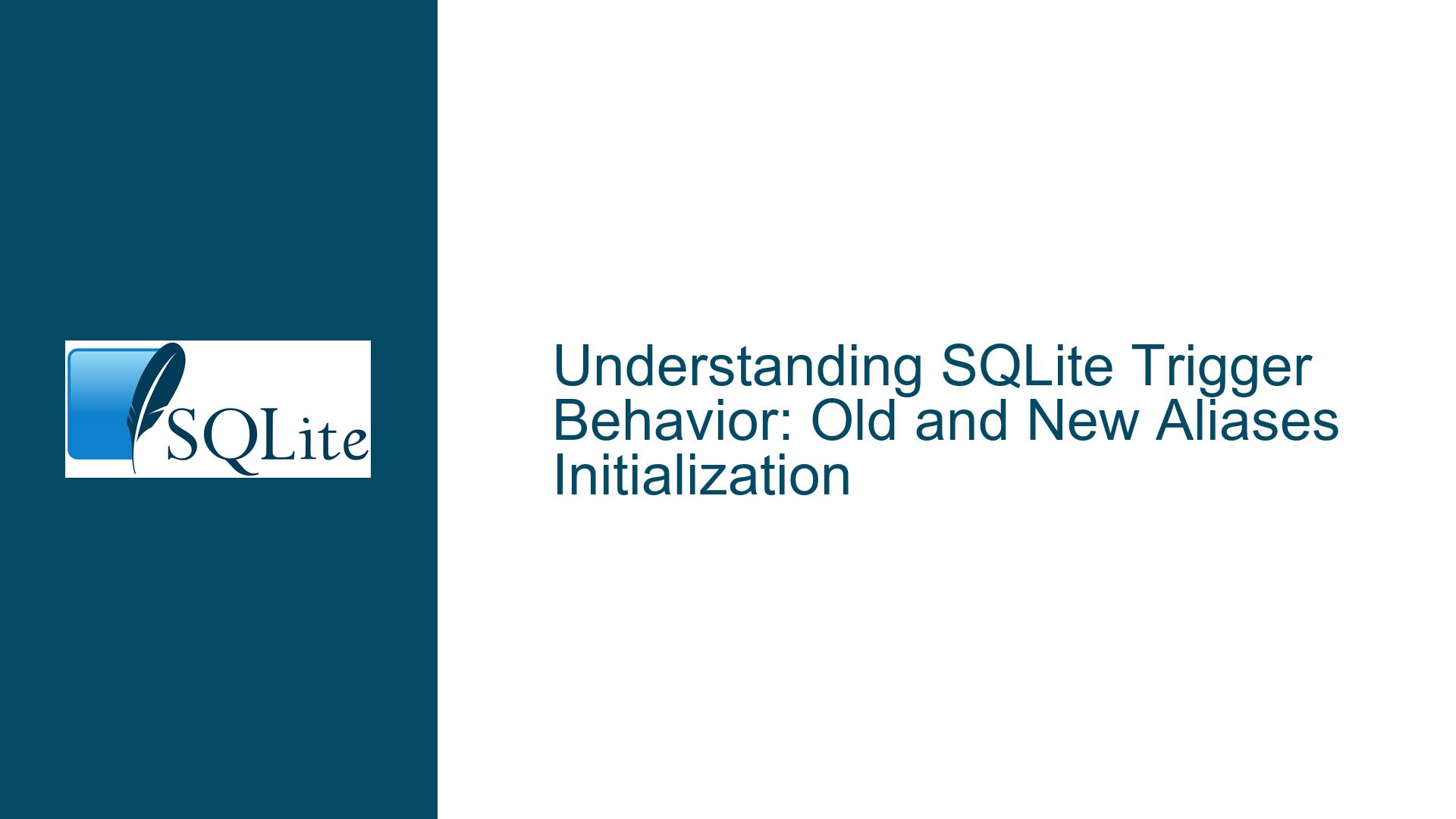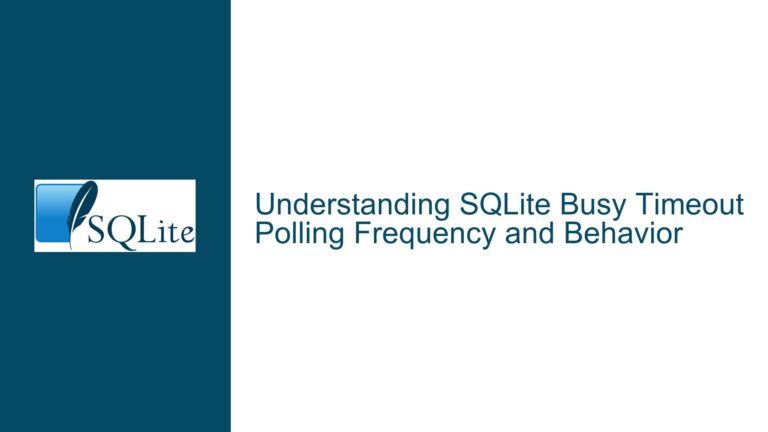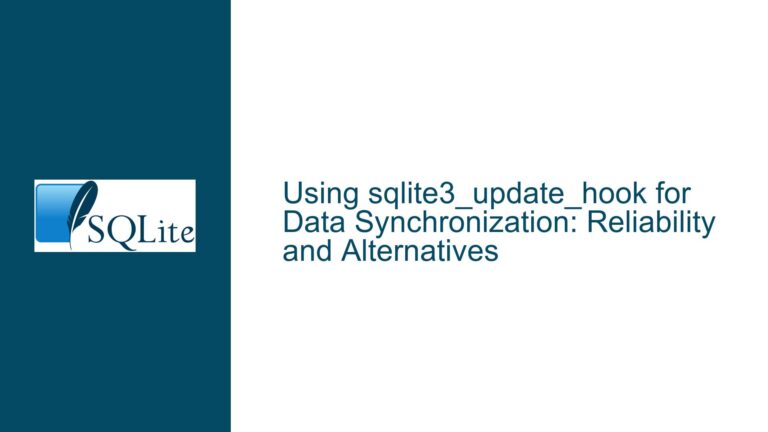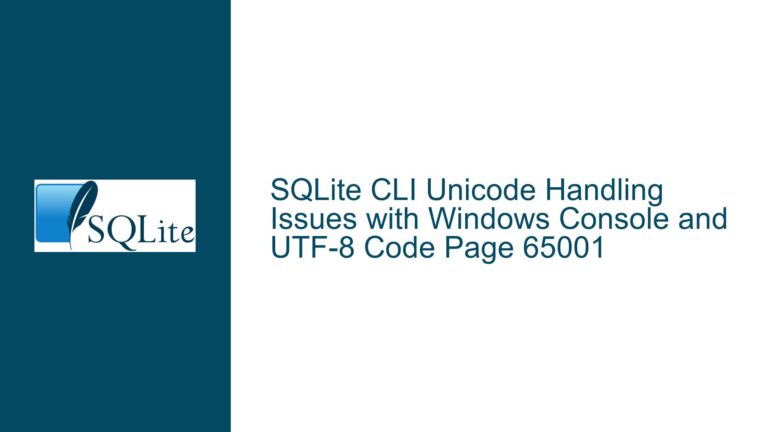SQLite Trigger Behavior: Old and New Aliases Initialization
Issue Overview: Trigger Behavior and the Initialization of Old and New Aliases
In SQLite, triggers are powerful tools that allow developers to automate actions in response to specific changes in the database, such as inserts, updates, or deletes. However, understanding how SQLite initializes and manages the old and new aliases within triggers is crucial for ensuring that the triggers behave as expected. The old alias refers to the state of the row before the triggering event, while the new alias refers to the state of the row after the triggering event. These aliases are essential for comparing the previous and current states of a row and for implementing logic that depends on these changes.
A common use case for triggers is to maintain an update counter in a table. For example, consider a table T with columns Id, X, and Y. The goal is to increment the value of X whenever the value of Y is updated. This can be achieved using an AFTER UPDATE trigger. However, when attempting to trace the changes within the trigger by logging the old and new states to a separate table, developers may observe unexpected behavior. Specifically, the new state captured within the trigger does not reflect changes made by the trigger itself, even if those changes are made before the new state is logged.
This behavior raises questions about how SQLite initializes and freezes the old and new aliases. Are these aliases computed and frozen before the trigger body is executed, or do they reflect changes made within the trigger? Understanding this mechanism is essential for debugging and ensuring that triggers perform as intended.
Possible Causes: Misconceptions About Trigger Execution and Alias Initialization
The confusion surrounding the behavior of old and new aliases in SQLite triggers often stems from misconceptions about how triggers are executed and how these aliases are initialized. One common misconception is that the new alias should reflect any changes made within the trigger body. However, this is not the case in SQLite. The old and new aliases are populated and frozen before the trigger body is executed. This means that any changes made to the row within the trigger body will not be reflected in the new alias.
Another potential source of confusion is the assumption that SQLite’s behavior is consistent with other database systems, such as Oracle. In Oracle, it is possible to modify the new values within a BEFORE UPDATE or BEFORE INSERT trigger, and these changes will be reflected in the new alias. However, SQLite does not support this behavior. In SQLite, the new alias is immutable within the trigger body, and any changes made to the row must be performed using separate UPDATE statements.
Additionally, the order in which triggers are executed can also lead to unexpected behavior. In SQLite, BEFORE triggers are executed before the triggering event, while AFTER triggers are executed after the event. If multiple triggers are defined on the same event, they are executed in the order in which they were defined. However, changes made by one trigger may not be immediately visible to subsequent triggers, especially if those changes are made to the same row that triggered the event.
Troubleshooting Steps, Solutions & Fixes: Ensuring Correct Trigger Behavior
To ensure that triggers behave as expected in SQLite, it is important to understand the initialization and behavior of the old and new aliases. Here are some steps and solutions to address common issues related to trigger behavior:
Understanding Alias Initialization: Recognize that the
oldandnewaliases are populated and frozen before the trigger body is executed. This means that any changes made to the row within the trigger body will not be reflected in thenewalias. If you need to log the state of the row after changes made by the trigger, you should perform a separateSELECTstatement within the trigger to capture the updated state.Logging Changes Within Triggers: If you need to trace the changes made by a trigger, consider using a separate table to log the
oldandnewstates. However, be aware that thenewstate logged within the trigger will not reflect changes made by the trigger itself. To capture the final state of the row, you may need to perform an additionalSELECTstatement after the trigger has completed.Avoiding Recursive Triggers: Be cautious when using triggers that modify the same table that triggered the event. This can lead to recursive trigger execution, where a trigger causes another trigger to fire, potentially leading to an infinite loop. To avoid this, ensure that your triggers are designed to handle recursive cases appropriately, or disable recursive triggers if they are not needed.
Testing Trigger Behavior: Thoroughly test your triggers to ensure that they behave as expected. This includes testing edge cases, such as updating multiple rows at once or updating rows that have complex relationships with other tables. Use tools like the SQLite command-line interface or a graphical database browser to inspect the state of your tables before and after trigger execution.
Comparing with Other Databases: If you are familiar with other database systems, be aware that SQLite’s trigger behavior may differ. For example, in Oracle, you can modify the
newvalues within aBEFOREtrigger, but this is not possible in SQLite. When migrating triggers from another database system to SQLite, carefully review the trigger logic to ensure compatibility.Using Temporary Tables for Intermediate Results: If your trigger logic is complex and involves multiple steps, consider using temporary tables to store intermediate results. This can help you avoid issues related to the immutability of the
newalias and ensure that your trigger logic is executed correctly.Reviewing Trigger Execution Order: If you have multiple triggers defined on the same event, review the order in which they are executed. Ensure that the triggers are defined in the correct order and that changes made by one trigger do not interfere with the behavior of subsequent triggers.
Handling Primary Key Updates: Be cautious when updating primary key values within a trigger. In SQLite, updating a primary key value can lead to unexpected behavior, especially if the trigger is defined on the same table. If you need to update a primary key value, consider using a
BEFOREtrigger to ensure that the change is applied before the row is updated.Using
ROWIDfor Row Identification: When working with triggers, consider using theROWIDcolumn to identify rows, especially if the primary key value may change. TheROWIDis a unique identifier for each row in a table and can be used to reliably reference rows within triggers.Documenting Trigger Logic: Finally, ensure that your trigger logic is well-documented. This includes documenting the purpose of the trigger, the conditions under which it is executed, and any assumptions or constraints that apply. This will help other developers understand and maintain the trigger logic in the future.
By following these steps and solutions, you can ensure that your SQLite triggers behave as expected and avoid common pitfalls related to the initialization and behavior of the old and new aliases. Understanding these nuances is essential for developing robust and reliable database applications.






